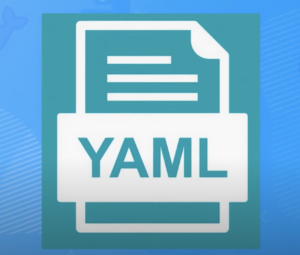YAML, which stands for YAML Ain’t Markup Language, is a human-readable data serialization standard used in programming and configuration files. Its simplicity and flexibility make it a preferred choice for a wide range of applications, from simple configuration files to complex data storage. YAML arrays, a fundamental component of the YAML language, allow for the organization of elements in a sequence, enhancing the structure and readability of data.
This article dives into the creation of YAML arrays, covering everything from basic array structures to more advanced configurations, and addresses frequently asked questions to clarify common uncertainties.
Table of Contents
Understanding YAML Syntax
YAML’s syntax is designed to be intuitive and easily understood, making it accessible for beginners and seasoned developers alike. At its core, YAML emphasizes readability and simplicity, using indentation to represent hierarchy and structure within data. Here are some key characteristics of YAML syntax that are essential for anyone looking to work with YAML arrays:
- Indentation: YAML uses spaces for indentation to represent nested structures, where each level of indentation signifies a new level in the hierarchy.
- Key-Value Pairs: Data in YAML is often represented as key-value pairs, making it straightforward to map names to values.
- Scalars and Collections: YAML supports scalars (e.g., strings, numbers) and collections (lists and maps), allowing for versatile data representation.
Understanding these basics is crucial for effectively utilizing YAML in projects and grasping the more complex aspects of YAML arrays.
Basic YAML Arrays
Creating a Simple Array
A YAML array is a sequence of elements, which can include scalars like strings and numbers. The syntax for defining a simple array involves listing each item with a hyphen and a space at the start of the line. Here’s an example of a basic YAML array containing several values:
colors:
- red
- green
- blue
- yellowThis structure is ideal for representing ordered data, such as a list of items or options.
Inline Array Notation
For scenarios requiring a more compact representation, YAML supports inline array notation using square brackets. This method allows for the declaration of an array in a single line, making it a convenient option for shorter lists or when space is a consideration. Here’s how you can use inline notation for the same list of colors:
colors: [red, green, blue, yellow]Comparing Block Style vs. Flow Style Arrays:
- Block Style: The traditional, multiline format used for arrays in YAML, enhancing readability for longer lists.
- Flow Style: The inline notation that condenses the array into a single line, useful for shorter sequences or when embedding arrays within other structures.
Both styles are valid and can be used according to the specific needs of your project, though block style is generally preferred for its readability.

Advanced YAML Array Structures
Nested Arrays
Nested arrays, or multi-dimensional arrays, allow for the representation of more complex data structures within YAML. These are particularly useful for organizing hierarchical data. To create a nested array, simply indent each new array level beneath the parent array item.
Example of a Nested Array:
teams:
- name: Team A
members:
- Alice
- Bob
- name: Team B
members:
- Charlie
- DanaThis structure efficiently organizes team names and their members, showcasing the power of nested arrays in YAML for complex data representation.
Arrays of Objects
YAML arrays can also contain objects, enabling the storage of structured data with multiple attributes. This is especially useful for configurations that require detailed specifications for each item.
Example YAML Configuration with Objects:
employees:
- id: 1
name: John Doe
role: Developer
- id: 2
name: Jane Smith
role: DesignerThis format is ideal for managing records that include various properties, such as employee details in a company.
Special Cases: Empty Arrays and Null Values
In some scenarios, you may need to define an empty array or specify null values. YAML handles these cases gracefully with simple syntax.
- Empty Array: Use square brackets
[]or simply omit the elements. - Null Values: Use
nullor~.
Examples:
emptyArray: []
nullValue: nullThese special cases are important for accurately representing the absence of data or preparing templates for future data insertion.
Practical Applications of YAML Arrays
YAML arrays find their utility in a wide range of applications, from simple configuration management to complex data serialization tasks. Here are some practical uses and tips:
- Configuration Files: YAML arrays are extensively used in configuration files for software and applications, allowing for the orderly arrangement of multiple settings or parameters.
- Data Serialization: They facilitate the structured representation of data lists, such as user information, product details, or inventory items, in a format that’s both human-readable and machine-parsable.
Tips for Organizing Data:
- Use nested arrays to represent hierarchical data structures, enhancing both readability and maintainability.
- Leverage arrays of objects for detailed data representation, ensuring each item’s attributes are clearly defined and organized.
By understanding and applying these advanced structures and practical applications, you can harness the full potential of YAML arrays to streamline your data organization and configuration management tasks.
YAML Arrays: Best Practices
When working with YAML arrays, maintaining readability and manageability is crucial. Here are some recommendations:
- Consistent Indentation: Use a consistent number of spaces for indentation to avoid errors and improve readability.
- Comments for Clarity: Use comments to explain complex structures or the purpose of specific arrays.
- Avoid Mixing Data Types: While YAML allows it, mixing data types within an array can lead to confusion. Stick to a single type for clarity and predictability.
Avoid common pitfalls such as incorrect indentation, which can change the data structure, and omitting the dash (-) before array items, which can lead to syntax errors.
FAQs
What is the difference between YAML arrays and objects?
YAML arrays are ordered lists of items, while objects are collections of key-value pairs, representing unordered maps.
How can I convert a JSON array to a YAML array?
To convert a JSON array to a YAML array, replace square brackets with dashes for each element, and ensure proper indentation.
Can YAML arrays include mixed data types?
Yes, YAML arrays can include mixed data types, though it’s best practice to keep them homogeneous for clarity.
How do I specify an array of dictionaries in YAML?
An array of dictionaries is specified by listing each dictionary with a dash, followed by key-value pairs for each dictionary’s contents.
What are some common errors to avoid when creating YAML arrays?
Common errors include incorrect indentation, mixing tabs and spaces, and forgetting the dash before array items.

